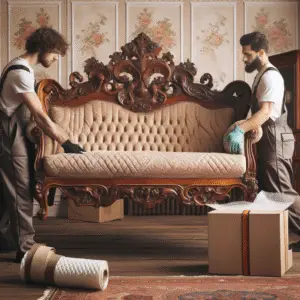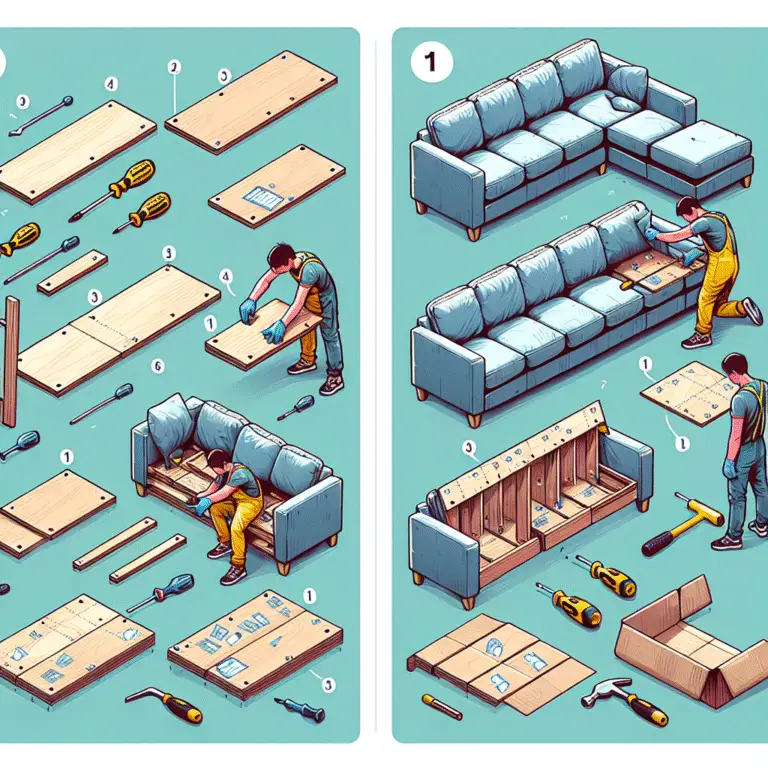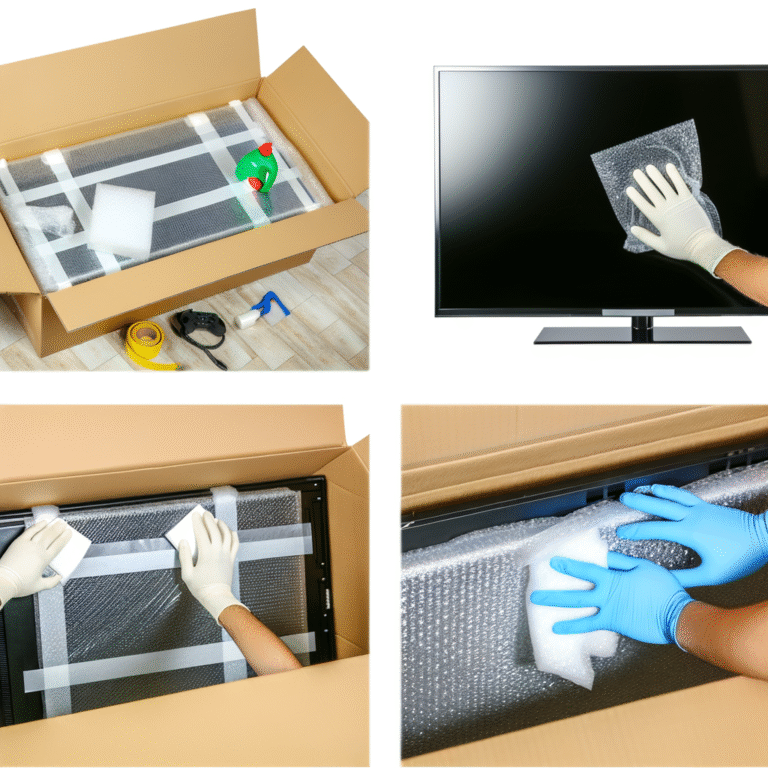How to Move IKEA Furniture Without It Breaking Apart
How to Move IKEA Furniture Without It Breaking Apart: The 2025 Guide You Didn’t Know You Needed
You just spent two days wrestling with Allen keys and cam locks to assemble your IKEA bookshelf. Now, it’s time to move—and your worst fear is watching all your hard work collapse into a pile of particleboard and screws.
If you’ve ever tried relocating IKEA furniture, you know the struggle is real. Luckily, there’s a smarter way to do it without ending up with splinters and regret. Here’s the complete step-by-step guide to moving IKEA furniture in 2025—damage-free and drama-free.
Understanding IKEA Furniture Construction
IKEA furniture is popular for its affordability and stylish Scandinavian design, but it comes with one big caveat: it’s not built like traditional solid wood furniture. Most pieces are made from particle board or MDF (medium-density fiberboard), connected using dowels, cam lock systems, and specialized fasteners.
These materials are lightweight and cost-effective, but they aren’t as durable once assembled. Unlike hardwood furniture, which can better endure stress during movement, flat-pack furniture often begins to loosen or split if handled incorrectly. This is particularly true at stress points such as joints and attachment areas. Before attempting to move it, you need to evaluate how solidly the piece is holding up after assembly.
Should You Disassemble or Move As-Is?
Here’s the million-dollar question: should you break it down, or move it whole?
Fully disassembling IKEA furniture reduces the risk of breakage, especially for large items. But it also takes time, effort, and a high risk of losing tiny screws or forgetting how it all fits back together. On the flip side, small, sturdy assemblies may survive a move as-is if handled carefully.
Partial disassembly—removing legs, drawers, or heavy detachable parts—can offer a balance between safety and convenience. Use this decision-making checklist:
- Is the furniture large or extra heavy?
- Is it showing wear or instability?
- Are you navigating tight hallways or stairs?
- Can you dedicate time to careful disassembly and reassembly?
If you answer “yes” to most of these, taking the item apart is your best bet.
Preparing for the Move
Don’t just dive in. Preparation is everything.
Start by gathering the right tools: screwdrivers, Allen wrenches, and zip-lock bags for organizing loose hardware. Label each bag clearly and tape it to the corresponding furniture part or keep everything in one place.
Before disassembly, take photos of all sides and joints. These images will be invaluable when you’re reassembling items in your new space—especially those tricky ones with hidden screws or locking mechanisms. And don’t forget to protect all delicate surfaces, sharp corners, or exposed edges using moving blankets, bubble wrap, or towels secured with tape.
Best Practices for Moving Assembled IKEA Furniture
If you decide to move items fully assembled, you’ll need more than just brute strength.
Reinforce the joints ahead of time. Add small metal brackets or corner braces where possible to increase stability, especially for bookshelves or wardrobes. Wrap each piece snugly with a moving blanket, and secure it using straps or stretch film.
When lifting, avoid dragging—this is where most damage occurs. Use furniture sliders to ease the load over hardwood or tile floors. And when facing doorways or narrow stairwells, measure first and tilt pieces strategically. Communication with your helpers is key to avoid sudden twists that can strain or rupture weak points.
How to Safely Disassemble IKEA Furniture (If Necessary)
For bigger or less stable items, take them apart with care.
Begin by examining the structure and identifying which parts hold the main framework together. Often, it’s better to leave certain pre-assembled sections intact, as long as they’re structurally sound. Follow the reverse-engineering method: start from the last step of installation, and work backward.
Label each part, and keep the hardware organized. Use masking tape and permanent markers to clearly link pieces together. Protect the components during transit by wrapping panels and storing smaller parts in containers or boxes with labels for quick identification.
Reassembling at the New Location
Once you’re in the new space, take your time reassembling properly.
Use your labeled materials and the reference photos you took earlier. Before putting anything together, inspect each part for cracks, swelling, or stripped screws. Make minor repairs with wood filler or extra brackets if needed.
As you reassemble, avoid overtightening screws—especially with particle board. Once everything is back in place, double-check for wobbling or instability. Reinforce as needed to ensure strong structural support.
Special Considerations for Specific Furniture Types
Not all IKEA items are created equal.
Beds and bed frames often require full disassembly due to their size and joint stress points. PAX wardrobes, on the other hand, are modular—but their backs can rip or warp easily, so handle with extra care.
Desks and shelving units sometimes survive partial disassembly, but anything featuring sliding or soft-close mechanisms should be moved carefully or taken apart, since misalignment can be hard to fix. Always transport these items upright and secure.
Common Mistakes to Avoid
Even seasoned movers make basic errors.
Avoid dragging furniture across floors—it stresses joints and can tear small fasteners from their holes. Over-tightening screws during reassembly can strip the holes in particle board, weakening the structure. Ignoring a wobbly shelf or leaning desk leg may lead to collapse later.
Most importantly, don’t skip protective wrapping. The edges and corners are extremely vulnerable during lifts, vehicle loading, and placement.
Tools and Accessories for Safer Moves
Make the job easier with the right equipment.
Invest in a furniture dolly, moving straps, corner protectors, and sliders. Apps like IKEA’s “Place” or third-party furniture instruction libraries (like TaskRabbit or BILT) can help with layout planning or visual instructions.
You can also buy reinforcement kits or angle brackets from home improvement stores to boost your furniture’s durability in transit—especially useful for older items that have already been assembled and moved before.
Hiring Professional Help vs DIY
Thinking of calling in the pros? Smart move—sometimes.
Professional movers familiar with flat-pack furniture know how to handle it with care. They may even offer in-house disassembly and reassembly services. While it’s more expensive upfront, it’s often worth it for complex or bulky pieces. Prices typically range from $100–$300 per large item depending on size and location.
Before hiring, make sure to communicate clearly. Explain the type of furniture and ask if they’ve worked with IKEA products before. Send photos ahead of time to avoid surprises on moving day.
Conclusion
Moving IKEA furniture without it falling apart requires more than just muscle—it takes planning, the right tools, and a healthy dose of patience. Whether you’re disassembling every component or protecting a whole piece, your top priorities should be maintaining its structural integrity and preventing damage.
As furniture expert and bestselling author Gene Hamilton once said, “Cheap furniture isn’t necessarily bad furniture—but it does require extra care to get the most life out of it.” With this guide, you’ll not only move your IKEA pieces safely—you’ll give them a second life in your new place.
So get that Allen key ready—it’s time to move smarter.













